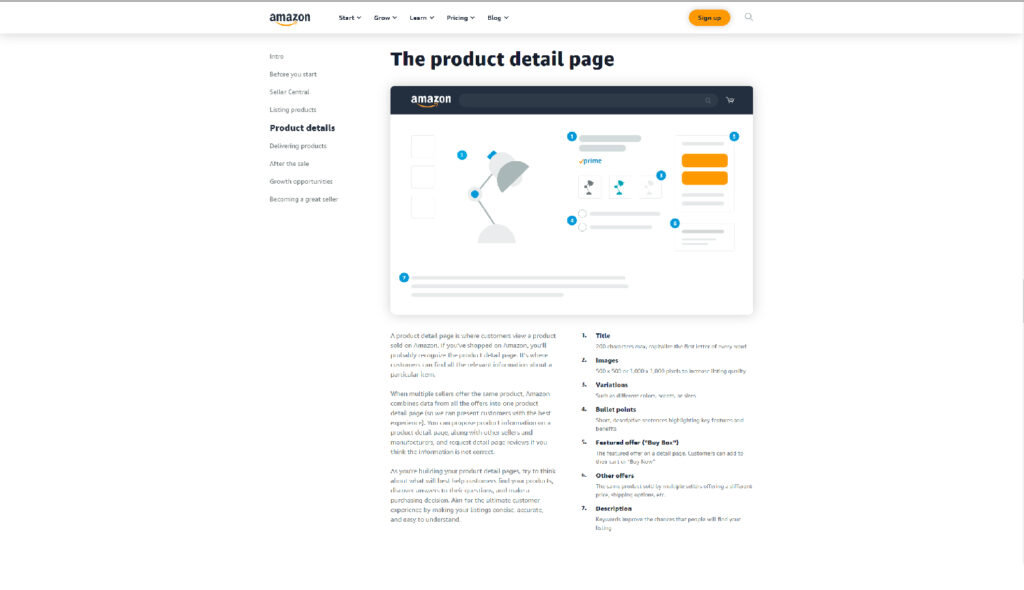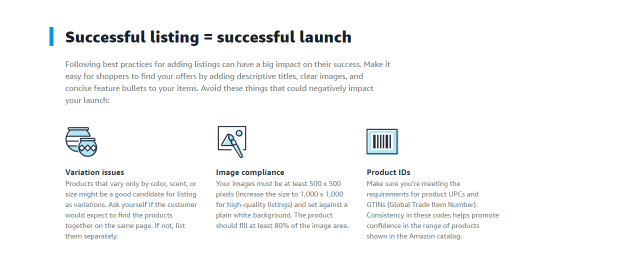Have you ever wondered why some Amazon listings seem to vanish into thin air? It’s like planning a grand party and forgetting to send out the invitations. This situation is known as “search suppression“. We understand that this can bring frustration yet there are logical steps to bring your Amazon listings back from suppression to the public notice.

Discover How To Supercharge Your Profits From Amazon & Beyond
Tech – unlock more revenue, increase efficiency & maximize profitability with integrated AI solutions
Agency Services – our ex-Amazonian team provides key insights, expertise & handles everything for you from A-Z
3PL Fulfillment Solutions – real-time inventory management connected to Eva tech across Amazon marketplaces
This guide will serve as your roadmap to fixing search suppressed listings, so let’s unravel the mystery and get your products the attention they deserve.
Table of Contents
Understanding Search Suppression on Amazon

Like a store with no sign, a suppressed listing is virtually invisible to shoppers. Search suppression occurs when a product listing does not meet Amazon’s strict standards, and as a result, it is hidden from search results and browsing. This can happen for a variety of reasons which we’ll explore further.
Maintaining the visibility of your product listings is crucial for sales success. However, even the most diligent sellers can face the challenge of search suppressed listings, which can significantly hinder product discoverability.
What Causes Search Suppression?
Amazon aims to provide a seamless shopping experience, and to achieve this, it enforces strict guidelines that sellers must adhere to. Amazon listing suppression typically occurs when a product fails to meet these standards. Common culprits include inadequate product images, incomplete descriptions, pricing anomalies, inventory deficits, or category misplacements. Identifying the root cause is the first step in reviving your suppressed listings.

Main Reasons:
- Inadequate Product Images: Listings can be suppressed if images are blurry, have additional text or watermarks, do not have a pure white background, or if the product does not take up at least 85% of the image area.
- Incomplete Product Information: Amazon requires detailed product information, including dimensions, weight, and usage instructions. Missing information can lead to suppression.
- Pricing Anomalies: Amazon may suppress a listing if a product’s price is significantly higher than that offered by other sellers on its platform, or suspiciously low, which might indicate a quality concern. Additionally, Amazon’s sophisticated pricing detection extends to comparing your product prices on other marketplaces such as Walmart, Etsy, and Shopify, ensuring consistency and market competitiveness across different selling platforms.
- Inventory Issues: Products that are consistently out of stock may be suppressed to improve customer experience.
- Listing Inaccuracies: Errors in product titles, such as incorrect spelling or mismatched product details, can lead to suppression.
- Non-compliance with Amazon’s Policies: Listings that violate Amazon’s policies, such as prohibited product claims or inappropriate content, will be suppressed.
- Performance Metrics: Sellers with poor performance metrics, like high order defect rates, can have their listings suppressed.
- Review Manipulation: Any indication of review manipulation or incentivized reviews can result in suppression.
- Shipping Performance: Failing to meet Amazon’s shipping standards, including late shipments or high pre-fulfillment cancel rates, can also cause suppression.
Initial Steps to Identify Suppressed Listings
To identify suppressed listings:
- Check the
Suppressedtab in theInventorysection of Amazon Seller Central. - Look out for notifications from Amazon regarding suppression issues.

Resolving Amazon Listing Suppression Issues
| Area of Focus | Task | Details |
|---|---|---|
| Correcting Image Issues | ||
| Resolution and Quality | Ensure image resolution supports Amazon’s zoom feature. | All images should be at least 1000 pixels in height or width, clear, and in focus. |
| Background and Composition | Adhere to Amazon’s image background requirements. | Use a pure white background (RGB 255,255,255) with the product occupying at least 85% frame. |
| Prohibited Content | Remove non-compliant elements from images. | No watermarks, borders, text, or logos should be present. |
| Main Image Compliance | Ensure main image accuracy. | The main image should show only the product, without non-included accessories. |
| Completing Product Information | ||
| Essential Details | Complete all necessary product information fields. | Include size, color, materials, specs, and usage instructions. |
| Accuracy | Maintain information accuracy. | Double-check listings for typos or outdated information. |
| Adjusting Pricing Anomalies | ||
| Competitive Pricing | Regularly compare and adjust pricing. | Keep prices competitive and use automated tools as needed. |
| Pricing Policies | Ensure adherence to Amazon’s pricing policies. | Make sure pricing strategies do not violate Amazon’s policies. |
| Addressing Inventory Issues | ||
| Stock Levels | Maintain healthy stock levels. | Use inventory management software to track and forecast needs. |
| Lead Time | Update lead times to reflect actual restocking time. | Adjust lead times in listings to be accurate. |
| Correcting Listing Inaccuracies | ||
| Title and Details | Correct any inaccuracies in your product titles and details. | Use precise, concise language that accurately describes the product. |
| Keywords | Implement relevant keywords appropriately. | Ensure keywords are relevant and not overused. |
| Ensuring Policy Compliance | ||
| Policy Review | Regularly review Amazon’s seller policies for compliance. | Pay special attention to prohibited items and intellectual property rights. |
| Content Review | Audit listings for appropriate and compliant content. | Revise any content that may be flagged as inappropriate or non-compliant. |
| Improving Performance Metrics | ||
| Order Defect Rate | Monitor and take action to improve the order defect rate. | Implement improvements in fulfillment processes or customer service response. |
| Cancellation and Return Rate | Reduce cancellation and return rates. | Provide clear descriptions and accurate customer expectations. |
| Avoiding Review Manipulation | ||
| Authentic Reviews | Encourage organic reviews within Amazon’s guidelines. | Never offer incentives for reviews; follow guidelines for review solicitation. |
| Enhancing Shipping Performance | ||
| Fulfillment Practices | Maintain fulfillment practices that meet Amazon’s standards. | Ensure Prime sellers meet Amazon’s Prime standards; maintain high delivery performance. |
| Shipping Metrics | Monitor shipping metrics and address issues promptly. | Address any shipping delays or issues to maintain performance metrics. |
By addressing each of these points thoroughly, you can effectively fix suppressed listings on Amazon and improve the overall health of your online store.
Avoid Future Listing Suppressions
Maintain a routine check of your listings to ensure they meet Amazon’s standards. Keep records of changes and monitor the performance post revision to ensure the issue is fully resolved.

| Task | Action Item | Status (✓/✗) |
|---|---|---|
| Image Quality | Use high-resolution images that comply with Amazon’s requirements. | [ ] |
| Image Compliance | Regularly check images against Amazon’s latest guidelines. | [ ] |
| Product Information | Ensure all product details are complete and accurate. | [ ] |
| Product Updates | Update listings to reflect changes in products. | [ ] |
| Pricing Strategy | Develop and maintain competitive pricing. | [ ] |
| Pricing Tools | Use tools to monitor market trends and adjust prices. | [ ] |
| Inventory Management | Use tools to prevent stockouts and maintain inventory levels. | [ ] |
| Inventory Updates | Keep Amazon inventory information up to date. | [ ] |
| Title Optimization | Include relevant keywords in product titles and descriptions. | [ ] |
| Keyword Stuffing | Avoid overusing keywords which can lead to suppression. | [ ] |
| Policy Compliance | Stay updated on and adhere to Amazon’s selling policies. | [ ] |
| Listing Audits | Conduct regular audits of listings for policy adherence. | [ ] |
| Customer Service | Provide service aiming for low order defect rates. | [ ] |
| Clear Expectations | Set clear expectations to minimize cancellations/returns. | [ ] |
| Review Guidelines | Follow Amazon’s guidelines for obtaining customer reviews. | [ ] |
| Review Authenticity | Avoid fake reviews or rating manipulation. | [ ] |
| Shipping Standards | Maintain reliable fulfillment to meet Amazon’s shipping standards. | [ ] |
| Shipping Metrics | Monitor and improve shipping performance metrics. | [ ] |
| Automated Tools | Use tools for automating listing monitoring and updates. | [ ] |
| Alerts Setup | Set up alerts for listing issues for prompt resolution. | [ ] |
| Market Awareness | Stay informed about marketplace changes. | [ ] |
| Seller Education | Engage with Seller University and other resources. | [ ] |
| Seller Support | Reach out to Amazon Seller Support when needed. | [ ] |
This checklist is designed to be comprehensive, covering all aspects from product images to customer service. Regularly reviewing and ticking off these items can help you avoid listing suppressions and keep your products visible to customers on Amazon.
Conclusion
Maintaining a vibrant presence on Amazon’s platform is akin to navigating a ship through ever-shifting seas. The checklist provided serves as your compass, guiding you through the common pitfalls that lead to search suppression and offering the bearings to chart a course toward successful selling.
Vigilance is key. Regular audits, adherence to policies, and proactive engagement with Amazon’s tools and resources are not just reactive measures but a strategic approach to e-commerce success. It’s about cultivating a store front that resonates with quality, transparency, and customer satisfaction.








